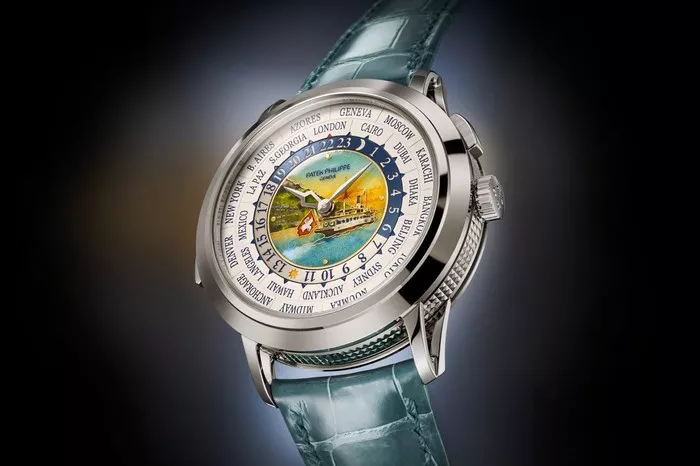In the intricate tapestry of timekeeping, atomic clocks stand as the unrivaled guardians of precision. These marvels of scientific ingenuity, governed by the principles of quantum mechanics, have redefined our understanding of accuracy. As we delve into the realm of atomic clocks, the question that beckons is: How accurate are atomic clocks? In this exploration, we navigate the complexities of atomic timekeeping, the technologies that underpin it, and the far-reaching implications for our perception of time.
1. The Genesis of Atomic Clocks: A Quantum Leap in Precision
Revolutionizing Time Measurement
Atomic clocks trace their origins to the mid-20th century when scientists harnessed the oscillations of atoms to create a new standard for timekeeping. The transition from mechanical clocks to atomic clocks marked a paradigm shift, with the precision reaching levels previously deemed unimaginable. The heartbeat of atomic time is governed by the vibrations of atoms, a fundamental constant in the intricate dance of quantum physics.
2. Atomic Clock Technologies: Harnessing Quantum Mechanics
Clocks on the Edge of Quantum Realms
The accuracy of atomic clocks stems from the utilization of specific atoms and their inherent oscillations. Cesium atomic clocks, one of the earliest iterations, rely on the hyperfine transitions of cesium-133 atoms. More advanced atomic clocks, such as those based on ytterbium or aluminum ions, delve into the quantum realms, exploiting the properties of single ions to achieve unprecedented accuracy.
3. The Role of Laser Spectroscopy: Precision Beyond Conventional Limits
Laser Precision Unleashed
In the quest for unparalleled accuracy, atomic clocks leverage laser spectroscopy techniques. By using lasers to manipulate and measure the energy levels of atoms, scientists can achieve precision beyond the limits of traditional timekeeping methods. This marriage of quantum mechanics and laser technology propels atomic clocks into the realm of femtoseconds, where a second is divided into quadrillionths.
4. The International System of Units (SI): Redefining Fundamental Constants
Uniting the World through Constants
The accuracy of atomic clocks has led to a redefinition of the International System of Units (SI). Key constants, such as the speed of light and Planck’s constant, are now defined based on the properties of atoms. This shift not only cements the role of atomic clocks as benchmarks for precision but also unites the global scientific community under a standardized system.
5. Practical Applications: Beyond Laboratory Curiosities
Precision in Everyday Life
The impact of atomic clock accuracy extends far beyond the confines of laboratories. Global navigation systems, financial transactions, telecommunications, and even the synchronization of networks rely on the precision of atomic timekeeping. Satellite navigation, for instance, hinges on the synchronization of atomic clocks to ensure pinpoint accuracy in determining location.
6. The Challenge of Relativity: Navigating the Space-Time Continuum
Einstein’s Influence on Timekeeping
Albert Einstein’s theory of relativity plays a pivotal role in the accuracy of atomic clocks, especially those aboard satellites. The gravitational time dilation predicted by Einstein’s theory means that clocks in different gravitational fields experience time differently. The precision of atomic clocks accounts for these relativistic effects, ensuring synchronization despite the influence of gravity.
7. Strontium Clocks and Optical Lattice Clocks: The Quest for Even Greater Accuracy
Pushing the Precision Envelope
The pursuit of accuracy never wanes, leading to the development of strontium clocks and optical lattice clocks. Strontium clocks, using the vibrations of strontium atoms, approach the limits of quantum precision. Optical lattice clocks, a frontier in atomic timekeeping, trap atoms in a lattice of laser beams, further refining accuracy and challenging the boundaries of our timekeeping capabilities.
8. The Atomic Second: Defining Time with Utmost Precision
The New Yardstick of Time
The definition of a second has evolved with the advent of atomic clocks. The International System of Units now defines a second based on the vibrations of cesium atoms. This standardized unit, known as the atomic second, reflects the unprecedented precision achieved by atomic clocks and provides a universal benchmark for timekeeping.
9. The Future of Atomic Clocks: Quantum Supremacy and Beyond
Quantum Horizons Unveiled
As technology advances, the future of atomic clocks holds promises of even greater accuracy. Quantum supremacy, a concept where quantum computers outperform classical computers, may find applications in refining atomic timekeeping algorithms. The integration of quantum entanglement and other quantum phenomena could open new horizons for timekeeping precision.
Conclusion: Precision Redefined, Time Transformed
Embracing the Quantum EpochIn unraveling the question of how accurate atomic clocks are, we find ourselves on the cusp of a quantum epoch. Atomic clocks, once confined to scientific laboratories, now permeate our daily lives, shaping the very fabric of our interconnected world. As we navigate the intricacies of quantum mechanics and laser precision, we witness the transformation of time into a realm where accuracy transcends the limitations of traditional clocks.
The accuracy of atomic clocks not only challenges the boundaries of our understanding of time but also redefines the practical applications that hinge on precise timekeeping. In the symphony of quantum vibrations, atomic clocks stand as the virtuosos, playing the notes that synchronize our modern world. The quest for accuracy continues, propelling us toward a future where timekeeping is not just a science but an art form, with atomic clocks as the brushstrokes that paint the canvas of our temporal existence.

